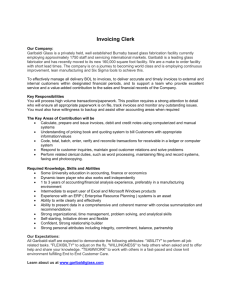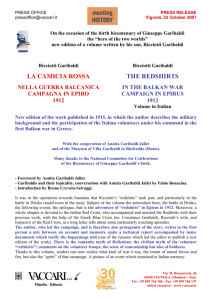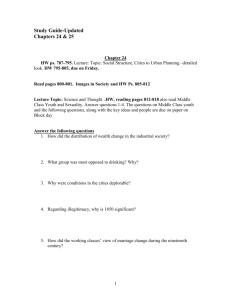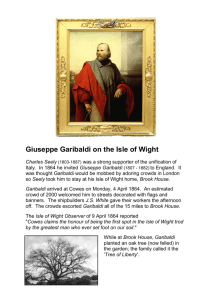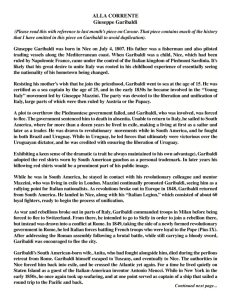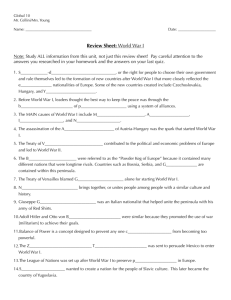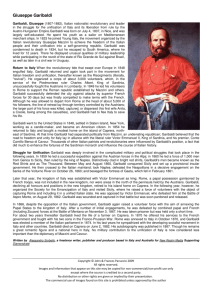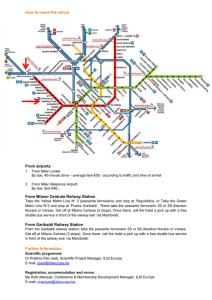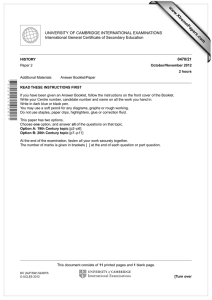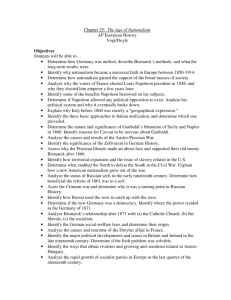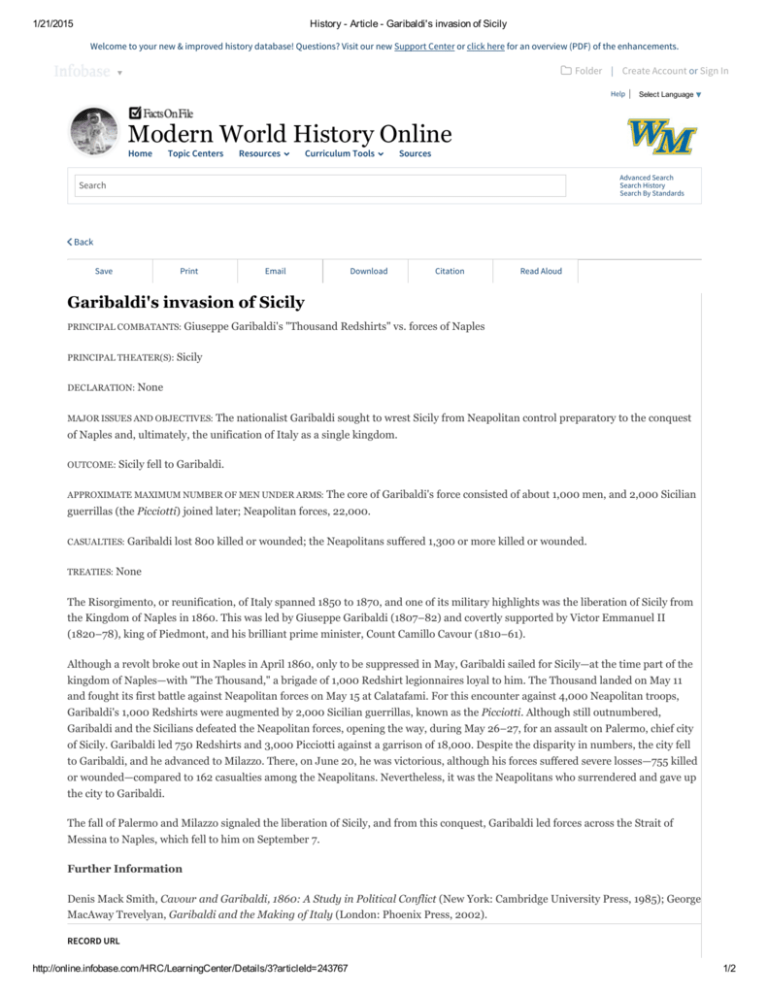
1/21/2015
History ­ Article ­ Garibaldi's invasion of Sicily
Welcome to your new & improved history database! Questions? Visit our new Support Center or click here for an overview (PDF) of the enhancements.
Folder | Create Account or Sign In
Help
|
Select Language ▼
Modern World History Online
Home
Topic Centers
Resources
Curriculum Tools
Sources
Advanced Search
Search History
Search By Standards
Search
Back
Save
Print
Email
Download
Citation
Read Aloud
Garibaldi's invasion of Sicily
PRINCIPAL COMBATANTS: Giuseppe Garibaldi's "Thousand Redshirts" vs. forces of Naples
PRINCIPAL THEATER(S): Sicily
DECLARATION: None
MAJOR ISSUES AND OBJECTIVES: The nationalist Garibaldi sought to wrest Sicily from Neapolitan control preparatory to the conquest
of Naples and, ultimately, the unification of Italy as a single kingdom.
OUTCOME: Sicily fell to Garibaldi.
APPROXIMATE MAXIMUM NUMBER OF MEN UNDER ARMS: The core of Garibaldi's force consisted of about 1,000 men, and 2,000 Sicilian
guerrillas (the Picciotti) joined later; Neapolitan forces, 22,000.
CASUALTIES: Garibaldi lost 800 killed or wounded; the Neapolitans suffered 1,300 or more killed or wounded.
TREATIES: None
The Risorgimento, or reunification, of Italy spanned 1850 to 1870, and one of its military highlights was the liberation of Sicily from
the Kingdom of Naples in 1860. This was led by Giuseppe Garibaldi (1807–82) and covertly supported by Victor Emmanuel II
(1820–78), king of Piedmont, and his brilliant prime minister, Count Camillo Cavour (1810–61).
Although a revolt broke out in Naples in April 1860, only to be suppressed in May, Garibaldi sailed for Sicily—at the time part of the
kingdom of Naples—with "The Thousand," a brigade of 1,000 Redshirt legionnaires loyal to him. The Thousand landed on May 11
and fought its first battle against Neapolitan forces on May 15 at Calatafami. For this encounter against 4,000 Neapolitan troops,
Garibaldi's 1,000 Redshirts were augmented by 2,000 Sicilian guerrillas, known as the Picciotti. Although still outnumbered,
Garibaldi and the Sicilians defeated the Neapolitan forces, opening the way, during May 26–27, for an assault on Palermo, chief city
of Sicily. Garibaldi led 750 Redshirts and 3,000 Picciotti against a garrison of 18,000. Despite the disparity in numbers, the city fell
to Garibaldi, and he advanced to Milazzo. There, on June 20, he was victorious, although his forces suffered severe losses—755 killed
or wounded—compared to 162 casualties among the Neapolitans. Nevertheless, it was the Neapolitans who surrendered and gave up
the city to Garibaldi.
The fall of Palermo and Milazzo signaled the liberation of Sicily, and from this conquest, Garibaldi led forces across the Strait of
Messina to Naples, which fell to him on September 7.
Further Information
Denis Mack Smith, Cavour and Garibaldi, 1860: A Study in Political Conflict (New York: Cambridge University Press, 1985); George
MacAway Trevelyan, Garibaldi and the Making of Italy (London: Phoenix Press, 2002).
RECORD URL
http://online.infobase.com/HRC/LearningCenter/Details/3?articleId=243767
1/2
1/21/2015
History ­ Article ­ Garibaldi's invasion of Sicily
http://online.infobase.com/Auth/Index?aid=19515&itemid=WE53&articleId=243767
RECORD INFORMATION
FROM: Encyclopedia of Wars, vol. 2
ISBN: 0-8160-2853-2
BY: Alan Axelrod; Charles L. Phillips
PUBLISHED: 2004 Last updated: 2014
TYPE: Subject Entry
ALSO KNOWN AS: Expedition of the Thousand
DATE: 1860
TAGS: Camillo Benso, Count of Cavour; Carbonari; Europe; Giuseppe Garibaldi; Italian people; Italian politicians; Italian unification; Italy; Military history of Italy;
Naples; Risorgimento; Sicily
Home
My Preferences About Infobase LearningHelp
Advanced SearchSaved Items
Terms of Use
Saved SearchesPrivacy Policy
How To Cite
Contact Us
_________
→ More Online Products
Copyright © 2015 Infobase Learning. All Rights Reserved.
http://online.infobase.com/HRC/LearningCenter/Details/3?articleId=243767
2/2

